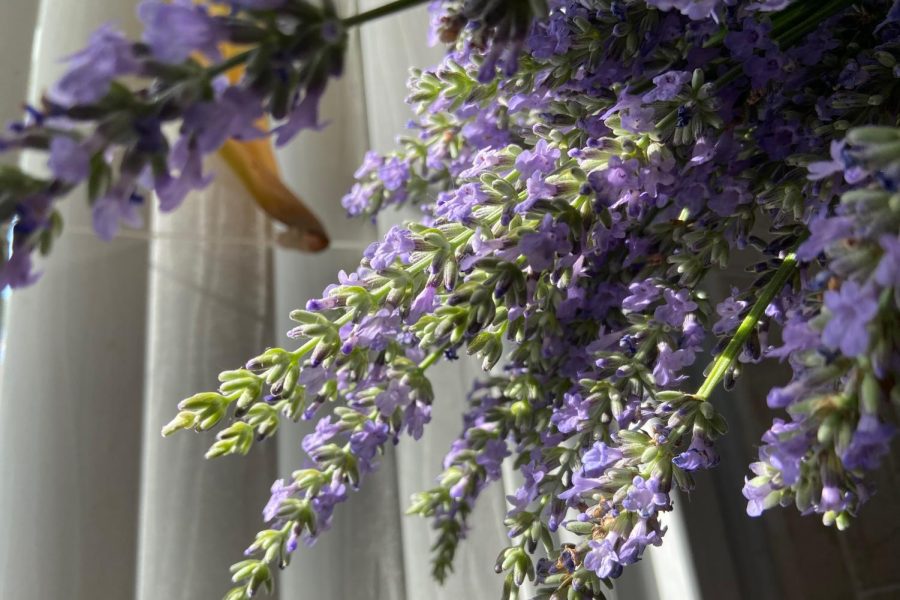Indoor Gardening is a Hobby that can Teach Many Life Lessons
Credit to Photo Submitted
Indoor flowers sit in the window of a kitchen at an FHN students house.
Though gardening is something that requires more from a person, it is a great skill to have. Seeming to have so many steps and restrictions, one could ease into it by starting off with indoor gardening.
Like many hobbies and activities, one can receive many life lessons. Starting an indoor garden too has its advantages and disadvantages, but could benefit a person once going through the process of maintaining something.
“It will teach them how to sustain plant life,” Samantha Soltysiak, Pre-ap Biology, and PLTW Medical Interventions teacher said. “Which would hopefully carry over into the real world, and helping out their own community.”
Even just having a slight interest, there are a variety of plants with individual maintenance to choose from. Indoor gardening can be a way to relieve stress, which correlates with studies showing how it can improve mental health.
“It’s definitely impacted my mental health,” Laney Quandt, a student indoor gardener said. “I feel like it’s a destresser for me. So, when I’m stressed about school or tests, I usually go buy a plant. It’s a bad habit but it helps.”
Dealing with something that needs care, indoor gardening requires commitment in order to be sustained. Being in an environment where it wouldn’t get the same materials as it naturally would, patience and research are needed.
“Do your research before beginning and to make sure that you’re committing, fully,” Soltysiak said.
It is important to thoroughly research what plants to begin with due to what environment and materials one can provide for the plant. Although one could already have a plant chosen, one may not have the experience required.
“I think that plants that are really good to start off with are plants that don’t require too much attention, such as cacti,” Soltysiak said.
Plants that are generally recommended tend to all stay in the low-maintenance category. Often not considered are vegetables and herbs. They too are good options because of the benefits they can provide.
“I would definitely say a snake plant would be the easiest to start off with because they really aren’t picky about the amount of sunlight they get,” Quandt said. “It’s really hard to overwater them. So, if you’re a beginner, get a snake plant.”
Each plant is unique in the sense of its appearance, function, and maintenance. Some require full shade, partial shade, or full sunlight, and at times a combination of either. Maintenance is where commitment comes in because some plants require more or less from a person. This is also the step in the process in which personal growth can appear.
“How to care for something other than themselves, how to be patient. Just a general understanding of how important plants are,” Soltysiak said.
Supplies can vary from person to person depending on what they’re planning for their garden. Starting off, many won’t have the need for more intricate tools since they don’t yet have the experience.
“I mean, you really only need a pot and soil to begin either way,” Quandt said.
Others could go in another direction. When asked, Soltysiak recommended an irrigation system that’s set to a timer to water plants at specific times of the day, and appropriate lamps that are also set to timers. Either way, commitment is shown by buying what is needed.
“I would say just go buy a plant or plant some seeds, and then just go from there,” Quandt said. “It’s not that hard once you get used to it.”
Your donation will support the student journalists of Francis Howell North High School. Your contribution will allow us to purchase equipment and cover our annual website hosting costs.







